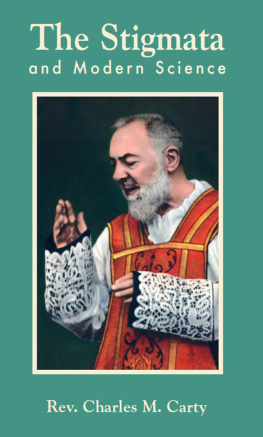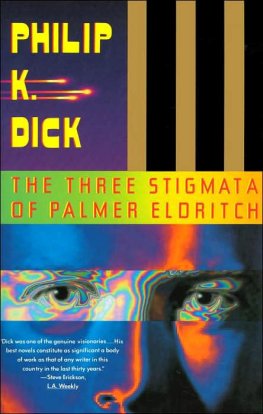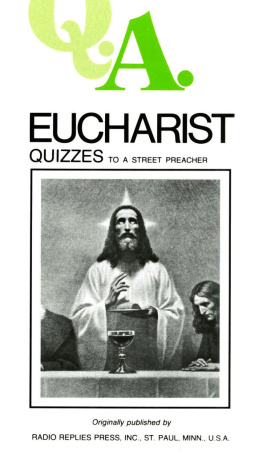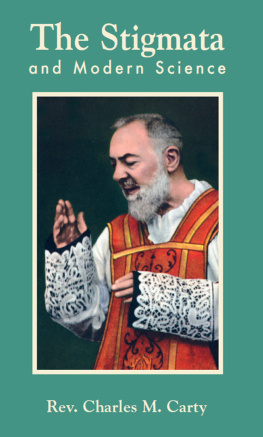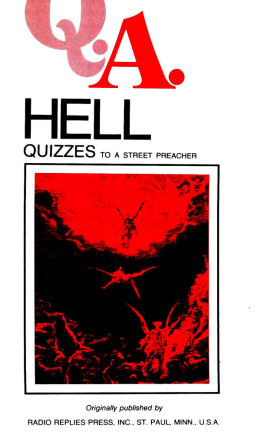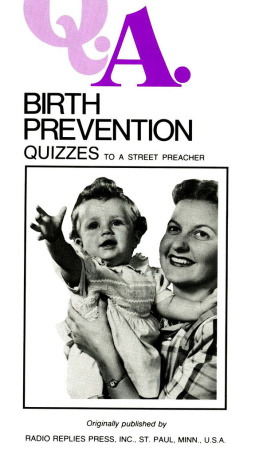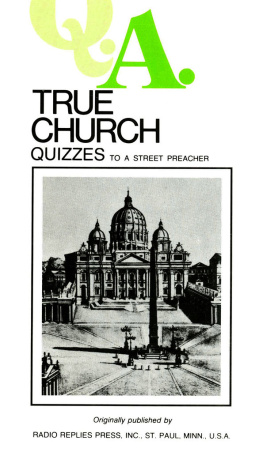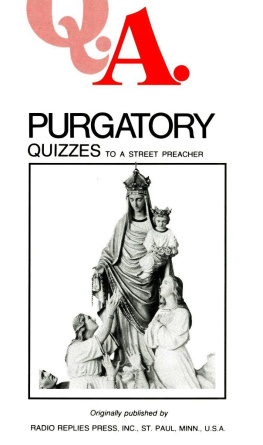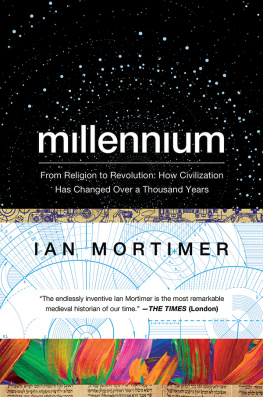Rev. Fr. Charles Mortimer Carty - The Stigmata and Modern Science
Here you can read online Rev. Fr. Charles Mortimer Carty - The Stigmata and Modern Science full text of the book (entire story) in english for free. Download pdf and epub, get meaning, cover and reviews about this ebook. year: 2015, publisher: TAN Books, genre: Science. Description of the work, (preface) as well as reviews are available. Best literature library LitArk.com created for fans of good reading and offers a wide selection of genres:
Romance novel
Science fiction
Adventure
Detective
Science
History
Home and family
Prose
Art
Politics
Computer
Non-fiction
Religion
Business
Children
Humor
Choose a favorite category and find really read worthwhile books. Enjoy immersion in the world of imagination, feel the emotions of the characters or learn something new for yourself, make an fascinating discovery.
- Book:The Stigmata and Modern Science
- Author:
- Publisher:TAN Books
- Genre:
- Year:2015
- Rating:4 / 5
- Favourites:Add to favourites
- Your mark:
- 80
- 1
- 2
- 3
- 4
- 5
The Stigmata and Modern Science: summary, description and annotation
We offer to read an annotation, description, summary or preface (depends on what the author of the book "The Stigmata and Modern Science" wrote himself). If you haven't found the necessary information about the book — write in the comments, we will try to find it.
The Stigmata and Modern Science — read online for free the complete book (whole text) full work
Below is the text of the book, divided by pages. System saving the place of the last page read, allows you to conveniently read the book "The Stigmata and Modern Science" online for free, without having to search again every time where you left off. Put a bookmark, and you can go to the page where you finished reading at any time.
Font size:
Interval:
Bookmark:
The Stigmata and Modern Science
Rev. Charles M. Carty
| Nihil Obstat: | Gualterus H. Peters, S. T. L., Ph. D. Censor Librorum |
| Imprimatur: | Gulielmus O. Brady, D. D., S. T. D. Archiepiscopus Sancti Pauli Paulopoli, die 24a Aprilii, 1958. |
The NIHIL OBSTAT and the IMPRIMATUR indicate only that this manuscript has been read before publication by one who is competent; that in the manuscript he has found nothing contrary to the faith of the Catholic Church nor to its moral teachings. In indicating that nothing such has been found, there is no implication that those who grant the NIHIL OBSTAT or the IMPRIMATUR agree with the contents, opinions or statements expressed in the manuscript.
Copyright 1974 by TAN Books.
Originally published by Fathers Rumble and Carty, Radio Replies Press, Inc., St. Paul, Minn., U.S.A.
Complete and Unabridged
TAN Books
Charlotte, North Carolina
www.TANBooks.com
2013
CONTENTS
The Stigmata and Modern Science
The following definition of Stigmatization given by Fr. Pfulff, S.J., in Kirchenlexicon may be said to represent the mind of the Church and the sentiment of the faithful with regard to the stigmata:
Stigmatization consists in participation in the Passion of Christ in a way that is shown outwardly by marks on those parts of the body where Christ bore His wounds. It is a charisma or supernatural gift.
The external marks of the wounds of Christ are then only the material element of Stigmatization; to be regarded as stigmata in the ecclesiastical sense they must be accompanied by a participation in the sufferings of Christ. And not all marks or wounds, even if they be on those places where Christ bore His wounds, are regarded as even the material element of Stigmatization. To be regarded as stigmata in the ecclesiastical as against the medical meaning of the term, these wounds must not be mere surface marks such as are sometimes produced by hypnotism, but must be deep wounds such as, for example, those of St. Francis of Assisi; they must not vanish after a short time but must remain fresh for years without suppurating, and when they bleed they must emit fresh blood. In addition, these wounds which form the material element of Stigmatization must be accompanied by a participation in the physical sufferings of Christs Passion and by the profession and pious practice of the true Faith in the Catholic Church, before they can be regarded as stigmata in the strict sense.
The vocation of the stigmatists is to suffer a share of the Passion of Christwhich exceeds all earthly sufferings. St. Margaret Mary Alocoque participated in the agony of Christ in the Garden and felt that death itself could hold nothing so painful for her. What must it be then to share in all the sufferings of the Passion, including the crucifixion, as most of the stigmatists are asked to do? Need we wonder then if Almighty God allows the stigmatists to get a glimpse of Thabor occasionally? Need we wonder if He gives them special gifts? St. Paul says: we are the sons of God... and joint heirs of Christ, yet so, if we suffer with Him, that we may also be glorified with Him. ( Rom . 8:16-17).
In the history of the stigmatists, we find that the stigmata were always accompanied with other charismata such as living for years without earthly food, the gift of prophecy, the gift of reading the secrets of the heart, the faculty of distinguishing between sacred and profane objects, the gift of perceiving the presence of the Blessed Sacrament in places hidden from view. In our own day all these charismata are found united in the person of Teresa Neumann. These various charismata that accompany Stigmatization mutually support each other and help to prove that the stigmata are genuine. Conversely, if any fault against faith or morals is detected in the stigmatists by proper authoritythe Bishop or the Holy Seeit is a sign that the person in question is not corresponding to the graces that go with the stigmata, or that the stigmata were not genuine. But as long as the proper authority issues no condemnation, the faithful need not be disturbed by shrill warnings from unauthorized individuals. In the long list of the stigmatists since St. Francis of Assisiwhich Dr. Imbert Gourbeyre puts at 321 up to his timeonly a few of those who had real external marks of the Wounds of Christ were found to be unfaithful. A few Catholic writers who hold peculiar views about the stigmata refer to the few cases of lapse with apparent triumph, as if they proved that the possession of the marks of the Wounds of Christ was of no consequence. The extraordinarily high proportion of stigmatists faithful to their glorious but painful vocation, amounting to nearly a hundred per cent, may be attributed to the fact that, in the Providence of God, only those receive the stigmata who have been tried in the crucible of suffering for many years and who have been found faithful.
On this subject I take the following quotation from Mystical Phenomena by Archbishop Teodorowicz:
Because the stigmata make the most difficult demands on the soul, on its ability and willingness to suffer in its mystical life, these souls must undergo long trials and sufferings. Only after a period of purgation in the glowing flame of pain do the wounds begin to make their appearance... Before they themselves appear, they prepare the body by means of manifold suffering, as though it were necessary to cultivate and harden it for continuous suffering. The bestowal of the stigmata is always preceded by corporeal sufferings; and the soul, thus cleansed by pain, is attuned to higher things and trained to valiant courage....
Practically the same process takes place in all the stigmatists; first severe illness or great interior commotion, then the appearance of one or other wound, rarely all of them together....
Thus a long illness preceded Teresa Neumanns Stigmatization.... In the measure that the painful sufferings increased and continued, her soul through the mysterious operation of grace became more perfect. The great difference between the condition of her soul at the beginning of her sickness and at the climax of her painful sufferings can be almost perceptibly measured. In the beginning we notice an actual yearning for an active life, against the visitation of the cross. At the end, however, we notice that she dies to all that is not Gods will and is completely resigned to the divine guidance.
The case of St. Francis of Assisi cannot be regarded as an exception to this rule. It is true that his vocation was to represent the poverty rather than the Passion of Christ, and to perpetuate the idea in a great Religious Order; but when his first mission was fulfilled, he was chosen for the second one, to bear in his body the marks of the glorious wounds of Christ.
The object of Our Divine Lord in granting the stigmata to St. Francis of Assisi and the lesson the faithful are expected to draw from them are expressed in the collect of the Mass for the Impression of the Stigmata of St. Francis. The words of this prayer can be applied to all the stigmatists who came after him:
O Lord Jesus Christ, who when the world was growing cold, in order that our hearts might burn anew with the fire of Thy Love, didst in the flesh of the most blessed Francis renew the marks of Thy Passion; mercifully grant by his merits and prayers that we may carry our cross and bring forth fruits worthy of penance.
Some few Catholic writers make St. Francis the criterion by which the genuineness of the other stigmatists is to be judged. Before receiving the stigmata a person should, according to these writers, have arrived at the heights of mystic contemplation, and the conferring of the stigmata should take place while the recipient is in ecstasy of love. No one can lay down rules for the Almighty, nor can we get an idea of His designs from a single instance such as St. Francis of Assisi; particularly when his chief vocation in life was not that connected with the stigmata. If we were to seek the meritorious cause of the favor in the case of St. Francis, we should rather find it in his great compassion for the sufferings of the Saviour combined with his own great sufferings than in seraphic love. As we shall see in greater detail later on, the external marks of the wounds of Christ on Teresa Neumann correspond exactly to those on the hands and feet of St. Francis of Assisi.
Next pageFont size:
Interval:
Bookmark:
Similar books «The Stigmata and Modern Science»
Look at similar books to The Stigmata and Modern Science. We have selected literature similar in name and meaning in the hope of providing readers with more options to find new, interesting, not yet read works.
Discussion, reviews of the book The Stigmata and Modern Science and just readers' own opinions. Leave your comments, write what you think about the work, its meaning or the main characters. Specify what exactly you liked and what you didn't like, and why you think so.

